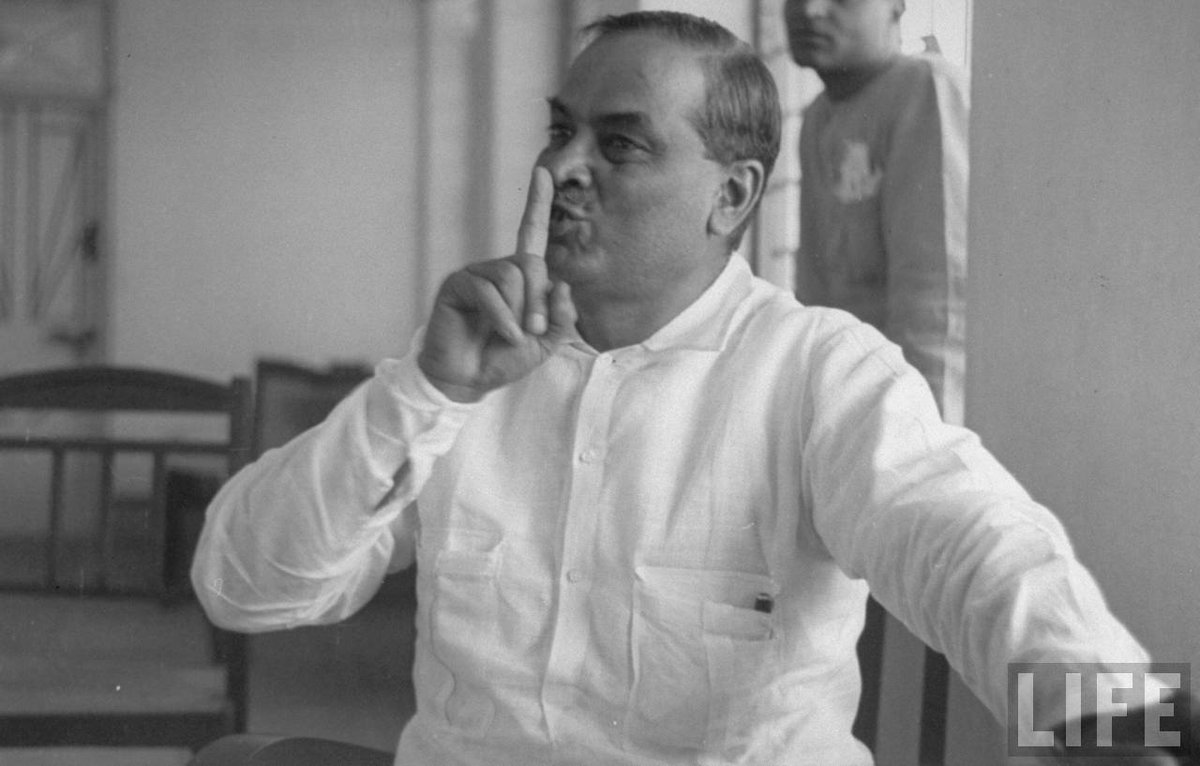#DoctorsDayIndia marks the birth + death day of Dr Bidhan Chandra Roy, a fabled doctor in Calcutta, and West Bengal's second chief minister after Independence. He was in office for 14 years. The story about him goes that he could diagnose a patient by their walk to his table >>
Apparently, he planned his 'chamber' such that the distance between the door and his table was significant and he would observe the patient as they walked. This created the Sherlock Holmesian myth that famous doctors like to cultivate: that they can diagnose patients by seeing >
their faces. He was known to be fond of Jyoti Basu's father, a medical practitioner called Nishikanta Basu, and the reason why Basu sr. was aghast at his son's Communist values. But there you go: a personal link between two famed Bengali chief ministers, Roy and Jyoti Basu >>
But these are stories, there may be some embellishment. What is fact is that the beloved Dr Bidhan Roy was loath to make provisions for Bengali Hindu refugees who came from 'ópaar' or East Bengal, now Bangladesh. He was especially mortified that they came to beautiful Calcutta >
To be honest, Nehru's Central policy held that the Bengal refugee problem was not as serious as the Punjab one, and refugees in Bengal were not to be encouraged to stay back. They were to be assisted to return. Still, Delhi did allot Chittaranjan Park to Bengali refugees >>
What did Dr Roy do? He was Bengali, he lived in Calcutta, he saw the city swelling with refugees who came with almost nothing. It's natural to expect him to show more empathy than distant Dilli and a Kashmiri aristocratic, even if charismatic, Nehru. No? He allotted a filthy >>
marshland called Jirat, which had been abandoned by local residents because it was unfit for human habitat, to refugee families. Here, the able-bodied were expected to build their own homes with material that was "loaned" to them by Roy's govt. Paid Re1 a day for manual labour >>
After construction of the "settlement", they were given a business loan of Rs 500 to rebuild their lives. Jirat was 60 km outside of Calcutta, there was no public transport, barely any serviceable road, and the refugees had only that Rs 500. Jirat was only one such settlement >>
In Calcutta, refugees essentially had to "grab land" lying empty to live. For this, Roy's government and his Bhadralok landowning supporters unleashed police violence on the refugees. Of course, the cops were outnumbered by the sheer numbers of refugees. There is a description>>
of this in Mahasweta Debi's Hajaar Churashir Maa. The story of Jirat and the official apathy is marvellously documented by the academic Joya Chatterjee in this paper 'Dispersal and the Failure of Rehabilitation', link here: https://www.jstor.org/stable/4499809?seq=18
I never heard these refugee stories about Roy growing up. I heard he was a great man of the sort one cannot find in today's goonda polity. A brilliant doctor. A Bhadralok.
He may have been a marvellous physician. But it is important to read Joya Chatterjee and Mahasweta Debi >>
He may have been a marvellous physician. But it is important to read Joya Chatterjee and Mahasweta Debi >>
It is important to paraphrase a question that Ashapurna Debi's heroine Satyabati asked her famous ayurved father: How is it that you are a doctor examining people's bodies all day long yet you do not know what is in their minds and hearts?

 Read on Twitter
Read on Twitter


